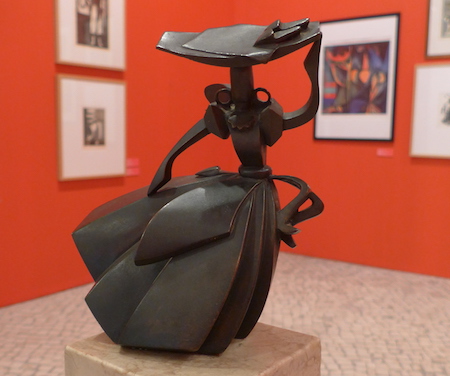
As a tour guide, I’m always interested in how the destinations I teach others about were marketed or imagined before I came around. What identifies these places to locals as well as to visitors? Travel posters from Argentina, Spain & Portugal during the mid-20th century reveal part of the story; however, one particular image stands out because of its absence today… the women who sold fish in Lisbon: as varinas.

Before we dive in, let’s talk about terminology. Anyone who speaks a Latin-based language can tell that something is, well, fishy. The varinas dealt with peixe, pescado, poisson… but no Latin word for fish begins with “v”. In this case, geography is more important than the product sold.
Beginning in the 16th century, the seaside around the city of Aveiro began silting up & eventually closed off. With no direct access to the Atlantic, waters grew stagnant & a lagoon formed. Eventually a man-made cut reunited the ocean with the lagoon, but irreparable damage to the local economy had already been done.

Fishermen went south in search of a living & gravitated toward Lisbon, with the largest fish market in Portugal. Train service in 1864 from Porto to Lisbon put the region of Aveiro in direct connection with the capital, & whole families could move down. Aveiro went from 12,000 to 3,000 residents, many locals from Ílhavo moved too, & more people left Ovar than any other town. A person from Ovar is an ovarense in Portuguese, but a popular alternate word is vareiro. The female equivalent is vareira, so fisherwomen in Lisbon came to be known as varinas… another way to say “the women from Ovar.” Nothing to do with the Latin word for fish but named for their hometown instead.

They came in force, settling around the nearby dock neighborhoods of Santos & Madragoa. Like a small colony, they married within known families & brought regional customs, dress & dialect with them. As immigrants to the capital, they also supported each other —in spite of occasional internal conflicts— and even left their children with fellow varinas at the docks during the day.

Life was not easy. Most women woke up at 03:00, met boats on arrival, watched fish auctions, then calculated how to come up with most lucrative sell for the day. With a full basket, the next challenge was taking fish to locals & convincing them they had the best catch. Songs & calls developed to attract attention… & sure, some trickery as well. Some varinas blew into fish mouths to puff them up. Some scooped from the bottom to hand over less-fresh fish. Matches were even lit to disguise the odor of an older catch. You do what you gotta do.

Walking through the streets of Lisbon barefoot characterized the varinas for decades. Navigating the docks & cobblestoned streets without shoes was much easier. In 1928, a public health campaign tried to eliminate this practice. But the fisherwomen found a way around: they’d sit & cover their feet with their skirts when police came close, or they would carry shoes in their basket & lend them to whoever needed a quick disguise.
Conflict with local police continued for other reasons as well. Residents filed complaints about fish entrails left on the street (imagine the smell!) or sales that blocked pedestrian traffic on sidewalks. At the same time, a campaign to clean the streets of Lisbon in general placed varinas in an awkward situation. But popular artists & the Estado Novo used these women to convey a positive image of the city… so much so that every modern artist has portrayed them. Songwriters even wrote fados about them, with “Maria Lisboa” being the most famous tune.

They couldn’t survive the modern era though. In 1980, the last fishing boats arrived at Lisbon’s docks. Facilities moved to a modern building past the Mosteiro dos Jerónimos, & the varinas disappeared from the city forever. No monument stands where they worked for over a century. Tourists rarely hear about how they shaped the local & visitor’s image of Lisbon. But climb the Bica staircase or wander the back streets of Madragoa on your next visit… you’ll likely see a few former varinas gazing out their windows, some in traditional dress or widows may have switched to all black. They continue to watch the world go by & know all the latest neighborhood gossip.


For a look into the lives & history of their community, the Lisbon city archive made a wonderful documentary in 2015 about the varinas (in Portuguese with no subtitles & lots of regional accents). Enjoy!
Excellent post and tribute to these amazing women. What a great story you have told here! Obrigada!
Thanks, Margaret!! I wish there was a permanent reminder in Lisboa of how these women shaped the city. Maybe one day!